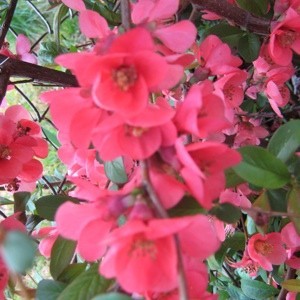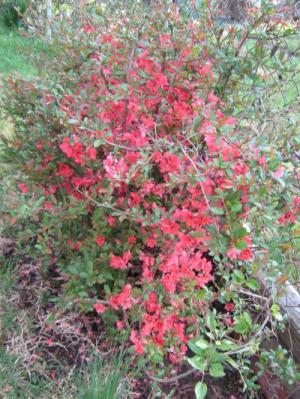
Quinces (Cydonia oblonga) are fruit trees related to apples and pears. They require a chilling period to flower (100 to 140 days below 45ºF), and can be grown successfully in cooler tropical climates as well as colder temperate regions. In the U.S. they are hardy to Zones 5-9. As trees, they have an irregular shape and reach heights of 10-15 feet tall.
Store undamaged fruits in boxes in a cool, well-ventilated, dark place, where they will keep for 2 to 3 months. Wrapping the fruits in plastic should be avoided, as it will discolor them internally.Because quinces have a strong aroma, they should be stored separately so that they do not contaminate the flavors of other fruits.
Quince trees may be propagated either by chip-budding onto rootstocks in summer (July or August) or by taking hardwood cuttings in fall.
Here are the questions asked by community members. Read on to see the answers provided by the ThriftyFun community.
 There is a bush in my backyard that has been there since I think before I was born. Every year it produces these beautiful pink blossoms well before any azaleas start to bloom. It stands about three feet tall and has remained with no care for decades. Without its flowers, its appearance reminds me a little of a boxwood. Can anyone tell me what it is and how I should care for it?
There is a bush in my backyard that has been there since I think before I was born. Every year it produces these beautiful pink blossoms well before any azaleas start to bloom. It stands about three feet tall and has remained with no care for decades. Without its flowers, its appearance reminds me a little of a boxwood. Can anyone tell me what it is and how I should care for it?
Hardiness Zone: 7a
By Cheryl Crockett from Washington, DC
Looks like a dwarf or miniature azalea. Good luck.
It's botanical genus name is Chaenomeles, it's common name in Australia is Japonica or flowering quince. It is one of the first to flower and the flowers are often followed by fruit which can be made into 'japonica jelly', (like quince jelly but a clear red colour).
Thanks to you both! This is very helpful. I am inclined to agree with John because it is definitely hardy. I just don't want to mess it up if I try to prune it (HELP! - how do I prune it?).
I doubt it is in any way related to the azalea because the azaleas haven't even hinted at beginning their blossoms. In my area (Wash., DC - USA) azaleas appear faithfully in time for Mother's Day (the 2nd Sunday in May) and these flowers appeared more than a month earlier.
Here is a picture of the bush from a bit of a distance. I know it can look better. Can anyone point me to some care and pruning advice? Should I prune it now or wait until the flowers fade but before summer? Thanks.

I have a Quince tree and I would like to know if I can grow another with seeds?
Hardiness Zone: 8a
By sandy Rose from Aloha, OR